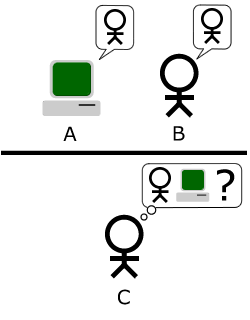
Originally called the Turing test, after computer pioneer Alan Turing who first proposed it, the human vs. machine test proved more functional than philosophical in the age of searchbots, spambots (and whatbots?).
Veronica Greenwood reports on a new approach, from “How Human Are You? A New Turing Test Relies on Spatial Relations” Discover (September 14, 2011):
… scientists have noticed that humans describe where objects are in space in a specific way, taking into account what spatial relationships would be most useful for a human listener. Artificial intelligences, even fairly sophisticated ones, talk about space differently, and the difference is large enough that it can form the basis of a new type of Turing test, British scientists reported at a conference in April. Now, New Scientist has developed an interactive version of the test, which lets you see for yourself what statements about space set off your silicon-lifeform alarms. So what’s behind it?
As so often. It’s hoped that the research will help develop less frustrating automated directions.
You know the type: “Turn right, 10 metres” – when anyone would say “Turn right at the Memorial.”
See also: Coffee: Hate captchas? Relief is ON the way: A proposed alternative to captchas, those wonky letters you are asked to identify when posting comments.